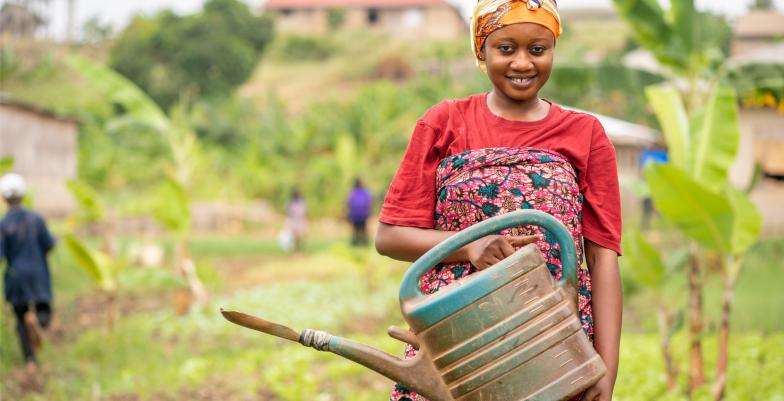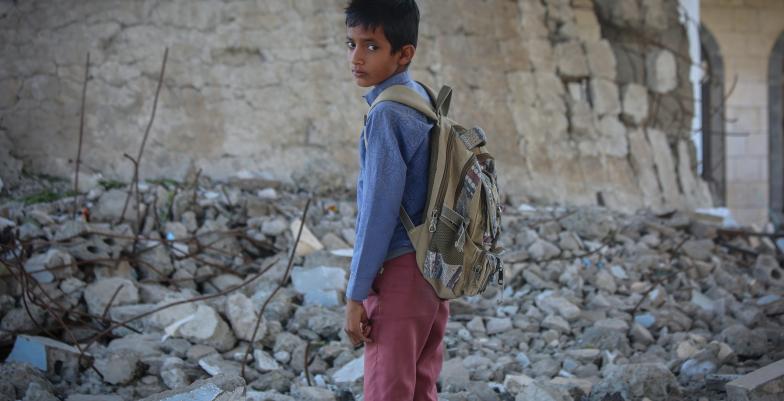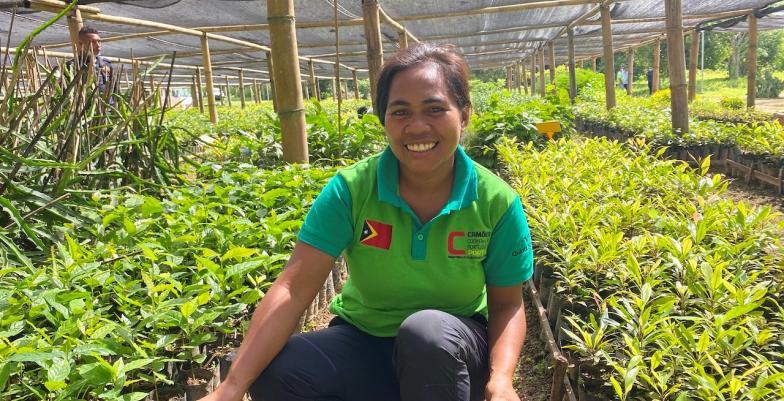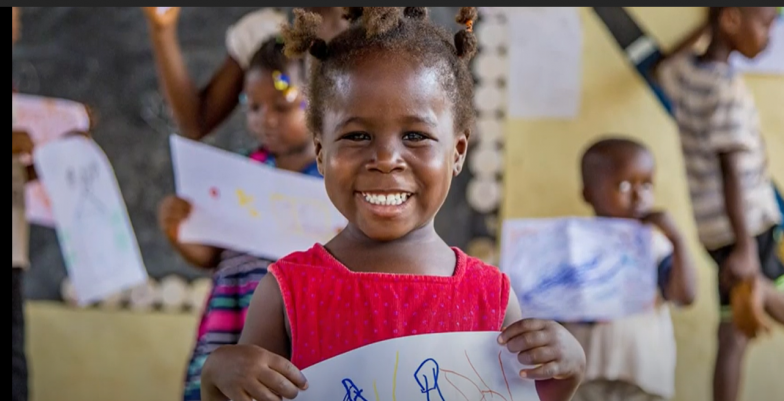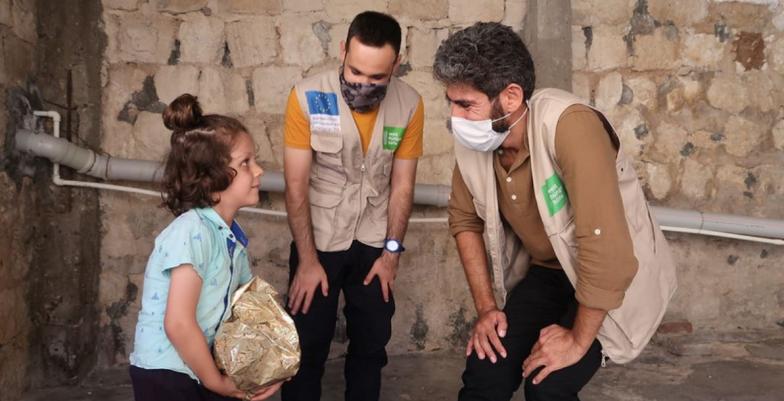International Cooperation & Partnerships
The EU and its Member States are the world’s largest development partner, accounting for 42% of global ODA in 2024. Their international cooperation is an integral part of their broader offer towards partner countries.
International cooperation and partnerships across policy areas
The EU’s participation in international cooperation and partnerships is carried out in a strategic way to achieve EU political priorities in a way that aligns with the UN 2030 Agenda and its Sustainable Development Goals (SDGs).
The aim of these partnerships is ultimately to ensure better synergies between EU foreign policy objectives and external instruments, going beyond financial assistance to jointly deliver more compelling and tailor-made offers that serve the strategic interests of the EU.
The European Commission's Political Guidelines for 2024-2029 affirm that Europe needs to be more assertive in pursuing its global interests by leveraging its economic power and international partnerships; EU enlargement is a geopolitical imperative, with flagship initiatives including the New Pact for the Mediterranean representing a more strategic approach to the EU's neighbouring countries.
The Global Gateway strategy, announced by President of the European Commission Ursula von der Leyen in September 2021, supports smart, clean and secure initiatives within the digital, energy and transport sectors to strengthen health, education and research systems across the world. Global Gateway aims to mobilise up to €300 billion in investments.
Fragility
Addressing fragility is essential to fostering stability, resilience, and shared prosperity.
The EU continues to engage in fragile and conflict-affected states through tailored partnerships to address the drivers of fragility and instability and to support sustainable development.
The complexity of many fragile and conflict-affected contexts underline the importance of a joint response that address humanitarian needs as well as development and peacebuilding challenges, in line with the humanitarian-development-peace nexus.
Fragile contexts generate the majority of the world’s refugees, migrants and internally displaced persons.
Addressing fragility through engagement with partner countries, including tackling root causes and offering legal alternatives, is key to reducing the incentives for irregular migration and the dangerous journeys often associated with these.
As resources are under strain, harnessing Team Europe as well as deepening collaboration between the EU, the World Bank, and the United Nations are important elements in complex and fragility settings.
Human development
Currently, more than ever, the world needs effective multilateralism, with a reformed UN at its core, and a rules-based international order that defends universal values, promotes shared public goods and delivers benefits for all.
Together with Member States, the EU has made a collective commitment to increase support for human development and social inclusion, focusing on education, health systems’ strengthening, social protection and other basic social services. The goal is to reach a spending target of 20% of Official Development Assistance (ODA).
Education is central to EU development cooperation, especially the education of girls, children of vulnerable groups and access to digital education.
The EU aims at ensuring accelerated action on poverty eradication, social inclusion, the promotion of full employment and decent work, ensuring that no one is left behind.
Food and nutrition security
The world is facing a global food crisis, triggered by conflict, extreme weather events, economic risks, consequences of the COVID-19 pandemic, and significantly aggravated by Russia’s war of aggression against Ukraine. The number of people acutely food insecure has reached a record level of 22.6% . A large majority of people facing high levels of acute food insecurity, 60%, are in Africa. The scale and frequency of food insecurity is increasing, as well as its severity.
The scale and complexity of the global needs require a collective response, yet funding is not growing at a sufficient pace to address increasing needs. The EU has published a Knowledge Review on the impact of ODA funding cuts on food and nutrition security together with providing policy recommendations. The EU and its Member States remain engaged and are delivering a comprehensive response to the global food insecurity comprising solidarity, production, trade, and multilateralism as outlined in Council conclusions “Stepping up Team Europe’s support to global food security and nutrition” from December 2024.
The EU has also published a “Vision for Agriculture and Food” (19 February 2025) in which it reiterated how global food security is an integral part of the EU’s overall security, competitiveness and sustainability agenda.
The EU has long been at the forefront of food security, disbursing together with Member States over EUR 13.5 billion in grants to support food security globally since 2022. On 27-28 March 2025, EU and Member States pledged USD 6.5 billion of the total 28 billion pledged at Nutrition for Growth Summit hosted by France.
The EU also seeks to strengthen the sustainable productivity growth in partner countries, especially in Africa. Through the EU Global Gateway, the EU offers investments that boost agri-food value chain development, while respecting the highest social and environmental standards. Furthermore, in March 2023, the EU committed EUR 70.7 million to boost the sustainable production of nutritious and locally grown food.
Between May 2022 and January 2025 the EU-Ukraine Solidarity Lanes allowed a total value of trade estimated at around EUR 219 billion, with around EUR 63 billion for Ukrainian exports.
The EU acts as a constructive partner in key events relating the the second UN Sustainable Development Goal known as Zero Hunger, which is about creating a world free of hunger by 2030. The EU is involved in events such as the United Nations Food Systems Stock Take, the UN Conferences of the Parties (COPs), as well as the EU-African Union Agricultural Ministers Meeting.
Financing for international cooperation and partnerships
The EU is working with many partners to enhance financing for international development cooperation. Some of the main partners are the Multilateral Development Banks (MDBs) and Development Finance Institutions (DFIs). The EU is working closely with them on projects worldwide on e.g. climate change, oceans, environment, food security, connectivity, education and health. The MDBs and DFIs mobilize private capital, enhance financial inclusion, and promote sustainable development, aligning with the United Nations' Sustainable Development Goals (SDGs).
International financing for development
2025 is a crucial year for sustainable development, because it is 10 years since the adoption of the 2030 Agenda for Sustainable Development and its 17 Sustainable Development Goals (SDGs), and 10 years since the third International Conference on Financing for Development (FfD) and the adoption of the Addis Ababa Action Agenda.
Progress has been made, however the financing gap has widened significantly over the last five years, reaching around USD 4 trillion annually, and there is an urgent need to address new and remaining issues, as well as systemic challenges to financing for sustainable development.
In this context, the fourth Financing for Development Conference (FFD4), took place in Seville from 30 June to 3 July. The final outcome, the “Compromiso de Sevilla”, is revolving around fiscal reform, innovative taxation, debt reform, reform of the International Financial Architecture, including by ensuring better coordination among multilateral institutions, and development effectiveness measures.
The hosting of FfD4 in Europe, in Spain, sent a message also of the EU’s staunch commitment to multilateralism. The conference offered an opportunity for the EU to showcase its offer and commitments and value added as a development partner, notably with the Global Gateway, to developing country partners across the globe. The endorsement of the ‘Compromiso de Sevilla’ was also a significant deliverable of the international community in the context of implementation of the Pact for the Future.
International Financial Architecture (IFA)
The International Financial Architecture (IFA) refers to the governance arrangements that safeguard the stability and function of the global monetary and financial systems. Designed in the aftermath of WWII (the Bretton-Woods institutions) the backbone of the IFA today continues to be the World Bank and the IMF. IFA reform is among the most contested issues on the global political agenda. Many governments and stakeholders are critical of the institutions and rules that currently shape the global monetary and financial systems, which they find not fit for purpose. The international financial architecture has been described as “outdated, dysfunctional and unfair” by the UN Secretary-General.
Calls for IFA reform have grown louder in the G20, COPs, International Financial Institutions, and the UN. The Global South broadly represented by the G77 call for better representation and voice in IFA governing bodies, more and better financing and help with debt management. By consequence, the IFA reform has gradually become central to the conversation around rebuilding trust in the multilateral system by making it more fair, representative and effective.
IFA reform is a platform for the EU and its MS to contribute to rebuilding trust in the multilateral system. The EU underlying approach is to respond concretely to the calls on IFA reform while managing unrealistic expectations from geopolitical and budgetary perspectives. The EU focus on the ability of low and middle-income countries to access sufficient affordable and predictable capital. The EU is particularly presenting solutions on financing of the SDGs, scaling up Global Gateway, carbon markets, encouraging mobilisation of resources from various sources, including the private sector, and promote sustainable finance among the key themes.
European Financial Architecture for Development (EFAD)
The European Financial Architecture for Development (EFAD) plays a central role in Europe’s efforts to work towards the achievement of the Sustainable Development Goals and to tackle climate change. The structure builds on a multiplicity of EU and national actors, from both public and private sectors, as well as financial instruments. Together, as ‘Team Europe’, they all hold sizeable financial firepower and solid technical assistance capacity, as well as significant decision-making power in multilateral financial institutions.
Reflections on how to make the European Financial Architecture for Development more coherent, strategic, inclusive, impactful and visible started with the Wise Persons Group report published in 2019. The June 2021 Council conclusions confirmed the importance of enhancing and improving EFAD and invited the Commission to present a set of actions to ensure the current financial architecture for development is effectively improved.
A significant amount of work has undertaken to support the European Development Finance Institutions to further strengthen their collaboration under a Team Europe approach and always aligned with the “policy first” level and with the aim to increase the visibility of EU external financing. Implementation of the Global Gateway strategy has been a catalyst to further leverage the entire European financial development ecosystem.
European Investment Bank (EIB)
At a time of geopolitical shifts and rising uncertainty, the EIB Group’s role in addressing global challenges is more relevant than ever. The creation of EIB Global in 2022 provided the EU a strategic partner to accelerate the implementation of the Global Gateway strategy, enhanced support to Ukraine and the neighbourhood and bring transformational changes to other parts of the globe.
The EIB, as a part of the International Financial Architecture and the Multilateral Development Banks, has a special role to play in strengthening the framework of development financing and projecting the EU values.
- The EIB is a truly European development bank and key for delivering on the EU’s strategic priorities. For the EU’s external action, it is necessary to step up our partnership with the EIB to deliver Global Gateway and reinforce the EIB’s development credentials.
- The EIB has been key partner in the number of EU’s strategic engagements, including supporting Ukraine’s energy capacities and Ukraine Facility, through implementation of investments aiming at the reconstruction and support to SMEs; reinforcing the EU Comprehensive and Strategic Partnerships currently being rolled out in the Middle East and the Southern Neighbourhood; helping to release the financial stress of the Palestine Authority.
- EIB’s efforts include responding to challenges related to the defence and security, in particular by adopting the European Investment Bank’s Defence and Security Action Plan. This is a significant further step in easing the EIB’s support for security and defence. The more flexible dual-use policy will allow to further strengthen the European Defence Technological and Industrial Base.
European Bank for Reconstruction and Development (EBRD)
EBRD has 76 shareholders (74 countries + the European Union (3%) and the European Investment Bank (3%)). All EU Member States are shareholders. Combined EU shareholding represent 54.4% and secure majority at the Board.
Programming and external financing instruments
Programming
Programming is the process through which the EU defines its medium and long-term international cooperation priorities. Along with the Commission, the EEAS contributes to the programming of funds and management cycle for the external financing instruments, on the basis of the policy objectives set out. The current Global Europe programming started in November 2020 and was concluded in December 2021 following the adoption by the European Commission of country, regional, ERASMUS+ and thematic multi-annual indicative programmes (MIPs).
Multi-annual indicative programmes define priority areas and specific objectives for the period 2021-2027 with each partner country and region.
For the current period, Mid-term Reviews of the programming are being finalised for Sub-Saharan Africa, Asia and Pacific, Latin America and Caribbean as well as for the Neighbourhood East and the Neighbourhood South.
Instruments and facilities
NDICI – Global Europe
Moving beyond a traditional developmental approach
The ‘Neighbourhood, Development and International Cooperation instrument – Global Europe’ (also known simply as ‘Global Europe’) entered into force on 14 June 2021.
Through Global Europe’s implementation the EU is transforming joint priorities with partner countries into concrete projects to support our geopolitical agenda as well as the implementation of the UN Sustainable Development Goals. Support through Global Europe is addressed through bilateral, regional and global initiatives.
Global Europe simplifies the EU external financing architecture by replacing and merging ten instruments under the previous budgetary cycle (2014-2020) into one comprehensive instrument, and strengthens the Union’s capacity to deliver on its strategic priorities and international commitments by providing flexibilities and innovative tools to forge stronger trust and collaboration with EU partner countries. ‘Global Europe’ is driven by a ‘policy first’ and ‘value-driven’ approach that will enable the EU to take a stronger geopolitical approach to its external action.
With a budget of nearly EUR 80 billion for the period 2021-2027, ‘Global Europe’ covers more than 70% of the EU’s external relations funding. It is based on three pillars: geographic programmes, thematic programmes and rapid response actions. It will be primarily implemented through geographic programmes (Neighbourhood East, Sub-Saharan Africa and Middle East, Asia and the Pacific), to allow for a more strategic and coherent approach of the EU action worldwide, closer to partner countries. Support and promotion of human rights will be at the core of our action, as well as supporting Civil Society Organisations around the globe.
Civil society engagement is a major priority, with a focus on women and youth organizations, with local and regional authorities and with the private sector to enable governments and policymakers to define and implement the necessary policy reforms to address challenges and promote sustainable development, peace and stability.
Global Europe is key to supporting the Global Gateway, our value-based connectivity approach, which will also be implemented through Team Europe Initiatives, putting together the leverage and know-how of EU institutions and EU Member States.
Global Europe also supports the EU’s long-standing commitment to youth around the world as clearly shown by the renewal of the Erasmus+ Programme, which benefits from more financial resources and outreach.
European Fund for Sustainable Development Plus (EFSD+)
The budgetary guarantee of the European Fund for Sustainable Development Plus (EFSD+) is the Union’s largest risk-sharing instrument to support priority investments outside the Union.
Established in 2021 by the Neighbourhood, Development and International Cooperation Instrument (NDICI) – Global Europe Regulation , as a successor of the European Fund for Sustainable Development (EFSD) established in 2017 and of the EIB’s External Lending Mandate (ELM).
It has met a very important demand from the European Investment Bank (EIB), the European Bank for Reconstruction and Development (EBRD) and other Development Financial Institutions (DFIs).
The evaluation of the External Financing Instruments for the 2014-2020 and 2021-2027 Multiannual Financial Frameworks highlighted the catalytic effect of EFSD+ in mobilising additional finance and expertise and its alignment with the Global Gateway strategy.
Close to 80 % of the EFSD+ guarantee capacity under the ‘open architecture’ framework to cover private sector operations has been committed.

